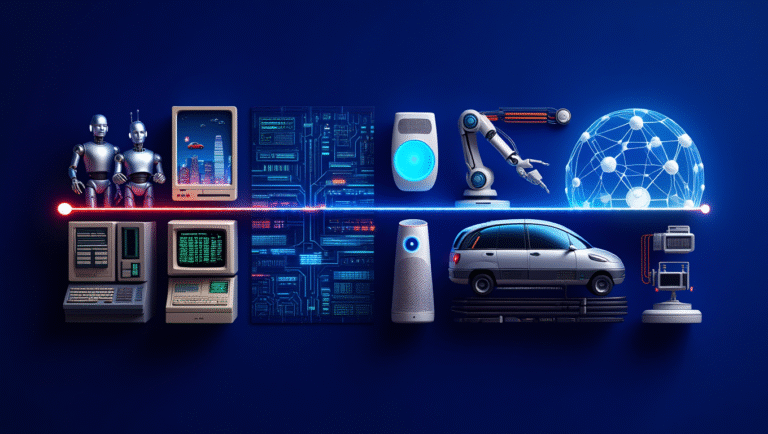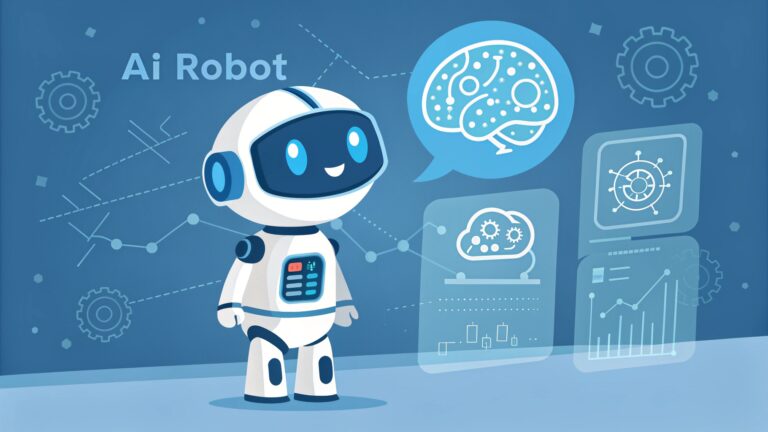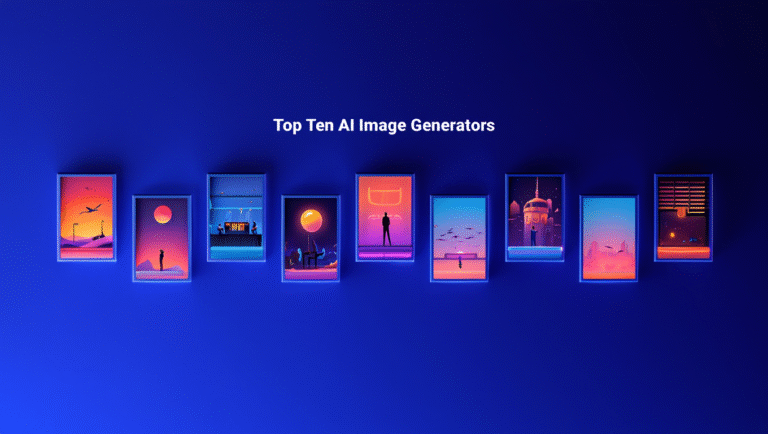Artificial Intelligence (AI) is everywhere—from suggesting your next Netflix show to finding the best route through traffic and even sorting your emails. But with that rise has come a host of myths and misconceptions propagated through sci-fi movies, headlines designed for shock value, and a poor understanding of what AI actually is. These misconceptions can make AI appear scarier or more otherworldly than it is. In this blog, let’s debunk the top 5 misconceptions about AI with simple, straightforward definitions so we can distinguish fact from fiction.
1. AI Is Just Like Human Intelligence
The Myth: AI is basically a digital human brain; it’s able to think and feel and reason the way we do.
The Truth: AI is impressive, but AI is not human. Current AI systems, typically called “narrow AI,” are created for specific tasks – recognizing a face, translating languages, etc. The machine can analyze data sets and recognize patterns, but do not have an awareness of consciousness, emotions, or self-awareness, For instance, when your virtual assistant gives you the answer to “What’s the weather like?” the device is matching patterns to produce the answer. It’s not reflecting on the meaning of rain. “General AI,” which refers to a machine that thinks like a human and fits all tasks that humans do is a long term goal – much more science fiction than reality. AI is simply a tool not a mind.
2. AI Will Take Over the World
The Myth: AI is going to develop superintelligence, outsmart humans, and take over in a human-like way (e.g., the Terminator).
The Truth: This fear is shaped by a combination of Hollywood drama and speculation about “superintelligent AI,” which does not exist today and may not exist for decades (if ever). Today’s AI is heavily controlled by humans and is good at doing specific jobs (e.g., suggesting songs, fraud detection, etc.), not following its own desires or motivations to “take over.” That said, there are ethical issues (i.e., making sure AI isn’t leveraging bias, how it can use data, etc.) that researchers take very seriously. The real danger is humans using AI, not AI acting by itself.
3. AI Will Eliminate All Jobs
The Myth: AI is a job-destruction machine, automating everything and putting people out of work.
The Truth: AI is changing the job landscape, but it’s not as simple as machines taking over for people. While AI can automate rote work (including data entry and assembly line work), there will still be new jobs and new roles, including AI trainers, data scientists, or ethics consultants to oversee AI. As an example, even in healthcare AI is enabling doctors to more quickly analyze scans, but not to replace their expertise. Technology has historically disrupted jobs and created new jobs and new industries. The internet created tons of jobs, but it wiped some out too. AI will likely disrupt jobs, but it will shift job skills rather than eliminating jobs entirely. The takeaway is that we need to learn and reskill to adapt.
4. AI Is Always Unbiased and Perfect
The Myth: Artificial intelligence is an infallible, unbiased judge that can never be wrong.
The Truth: Artificial intelligence is only as good as the data on which it is trained, and a human created that data. If the data contains biases, such as favoring certain demographics in hiring, the AI may perpetuate those same biases. Some early facial recognition algorithms performed poorly with darker skin colors because they had never trained on an appropriate dataset. All AI makes mistakes. For example, self-driving systems have been known to misclassify, albeit few and rare, false positives on stop signs. The answer? Data: more, better quality, and greater human oversight to identify and correct errors. AI is not magical: merely work in progress.
5. AI Is Only for Tech Experts
The Myth: AI is so complex that only programmers or scientists can use or understand it.
The Truth: AI is becoming extremely accessible. You don’t need a PhD to interact with it — the chances are you are using AI all the time. When your shopping online and get product recommendations, that is AI. When your phone suggests a reply to a text? AI too. No-code AI platforms that let small businesses analyze customer data, or apps like Canva that incorporate AI to help anyone create designs, make it easier for average people to interact with AI. But, while you may need expertise to build advanced AI, interacting with it is as simple as tapping your phone. AI is a tool for everyone, not just the tech elite.
Why Busting These Myths Matters
Misconceptions about AI can lead to fear, mistrust, or unrealistic expectations. By understanding what AI really is—a powerful but limited tool—you can better appreciate its role in your life and engage with it thoughtfully. Whether it’s questioning how your data is used or exploring AI tools for your work or hobbies, knowing the truth empowers you to navigate this tech-driven world.
Final Thoughts
AI is not an all-knowing overlord, nor is it some perfect genius; it’s a technology created by humans that is influencing the way we live, work, and engage others. By removing some of the myths underpinning how we relate to it, we can step back and see it for what it is: a tool that certainly has immense capabilities, a few limitations, and a huge responsibility. So, next time you hear someone say AI is going to take their job or take control of the world, you can show the facts to dispute that perception. Utilize AI’s opportunities, but keep a curious and critical eye on it – after all, it’s intended to help, not hinder.



